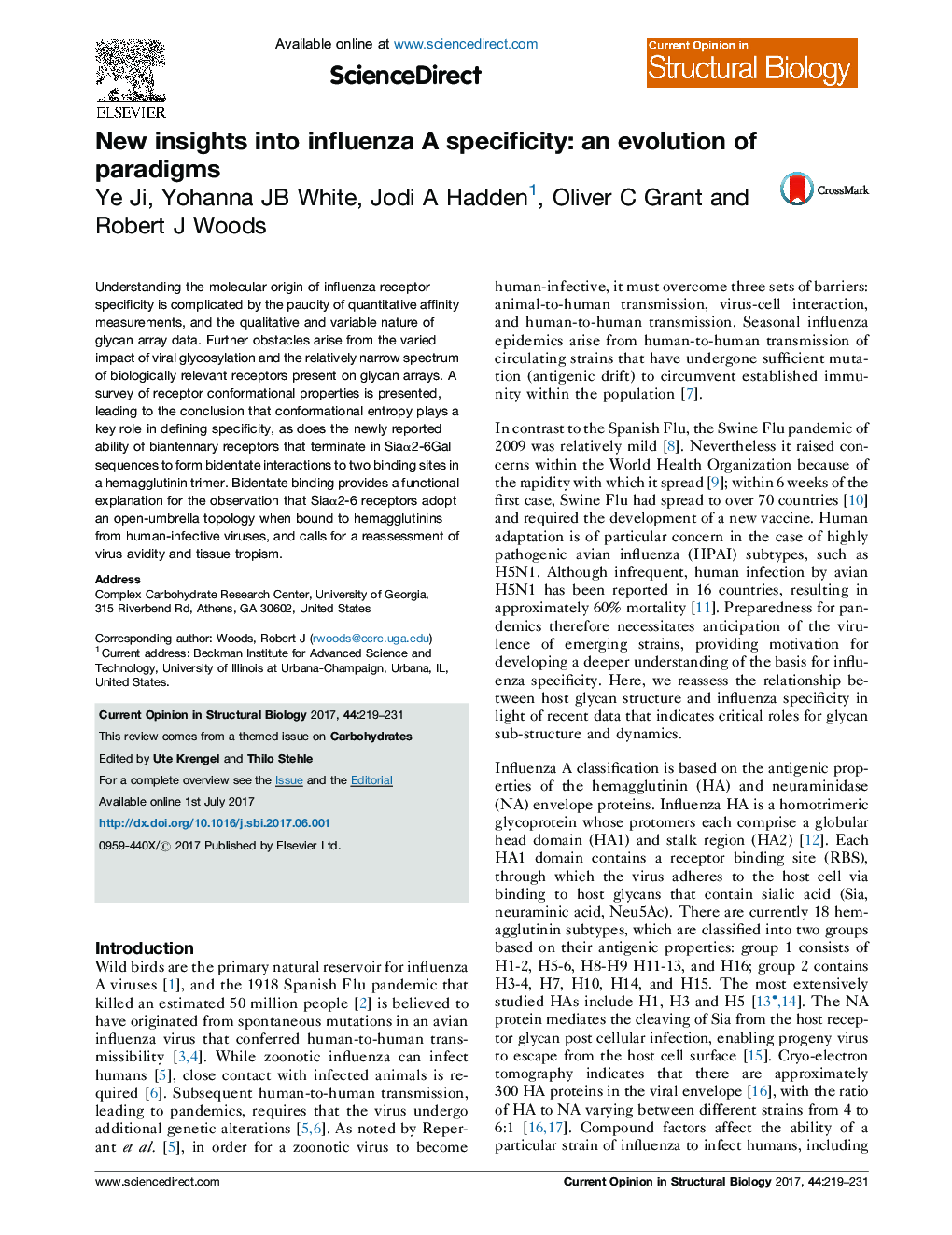| Article ID | Journal | Published Year | Pages | File Type |
|---|---|---|---|---|
| 5510855 | Current Opinion in Structural Biology | 2017 | 13 Pages |
â¢Influenza specificity is influenced by differences in glycan conformational entropy.â¢Biantennary α2-6 sialosides can boost avidity by forming bidentate HA complexes.â¢All reported HA-oligosaccharide complexes can be grouped into one of four topologies.â¢Interpretations of specificity must consider the impact of changes in glycan substructure.
Understanding the molecular origin of influenza receptor specificity is complicated by the paucity of quantitative affinity measurements, and the qualitative and variable nature of glycan array data. Further obstacles arise from the varied impact of viral glycosylation and the relatively narrow spectrum of biologically relevant receptors present on glycan arrays. A survey of receptor conformational properties is presented, leading to the conclusion that conformational entropy plays a key role in defining specificity, as does the newly reported ability of biantennary receptors that terminate in Siaα2-6Gal sequences to form bidentate interactions to two binding sites in a hemagglutinin trimer. Bidentate binding provides a functional explanation for the observation that Siaα2-6 receptors adopt an open-umbrella topology when bound to hemagglutinins from human-infective viruses, and calls for a reassessment of virus avidity and tissue tropism.
